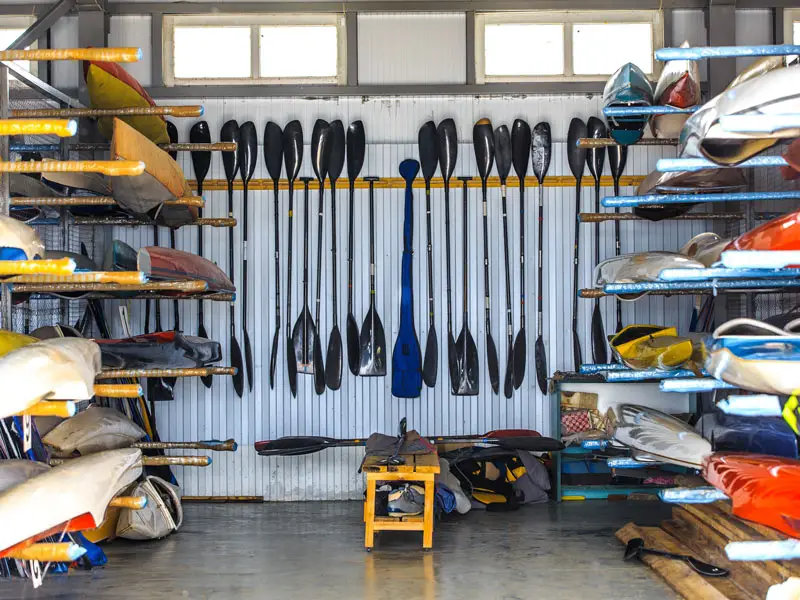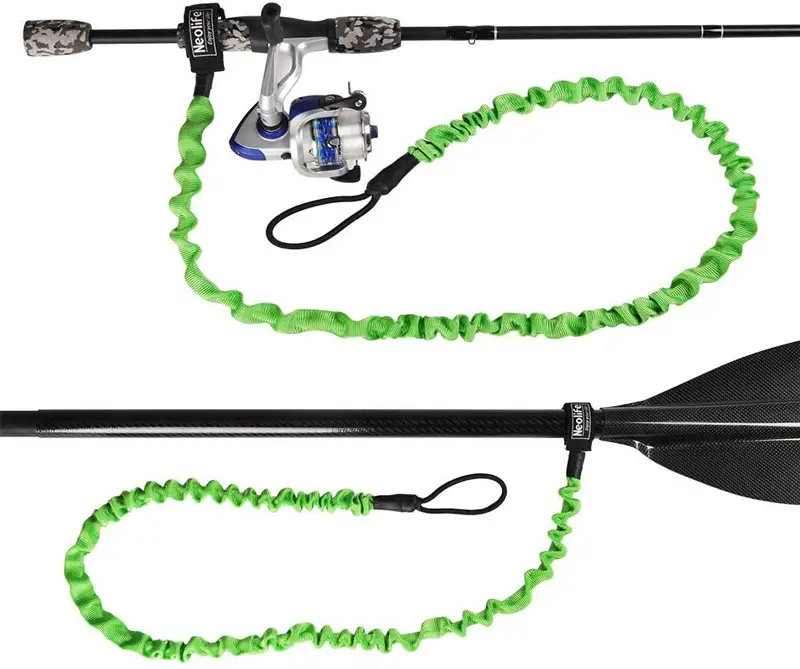New kayakers often ask the question do kayak paddles float? A simple answer to this is yes and no. There is no specific answer to the question as buoyancy depends on the paddle’s materials and design, which differ depending on the brand. Paddles are available in different forms, and they float to some extent while other types can slowly sink.
Whether kayak paddles can float was more prevalent in the past since paddles were often made with much less buoyant material and were of a more straightforward construction. Nowadays, the majority of paddles float, with some floating better than others.
The Paddle Is Your Most Important Tool
Your paddle is your most vital piece of kit when you are kayaking. Without it, you are at the mercy of the current and wind. It is the one thing that transfers your power into propulsion and is one of the factors that affect how fast you can paddle.
Regardless of whether you use kayaks for racing or fishing, you will find paddles specialized for your ideal activity. The different types of paddles are also available in various designs, different varieties. Factors like materials and weight affect how well a paddle floats. However, other factors like shape also play a part.
As they design, manufacturers pay attention to the floatation of their paddles. However, if you are informed on kayak paddles’ design, you will know how to determine how buoyant it is before purchase. Also, never skimp essential tools as you will end up with something unfunctional. For instance, some paddles drift away too quickly while others sink easily. To get the right paddle, opt for an unsinkable paddle.
What Makes A Kayak Paddle Float?
The Paddle Weight And Density
When talking about whether kayak paddles float or not, weight is the first thing that crosses the mind. Isn’t it the weight and density in stones that make them sink while sticks float? So yes, weight and density affect the buoyancy of a kayak paddle. You can opt for a budget-friendly paddle that will have more weight than an expensive one.
Besides the actual weight, swing weight also affects. Swing weight is the perceived weight of the paddle during use. In lay man’s language; it determines how light or heavy it feels when paddling. With water resistance, gravity, downswing, and upswing in place, the actual weight cannot scale with swing weight.
To test your paddle’s swing weight, you actually have to go through the motions of paddling. Two paddles of the same weight can feel completely different. You don’t want your paddle’s swing weight too heavy as you will be paddling thousands of times each use.
Material And Construction
Among the main reasons why paddles are of different prices is because of the material used. The material used to make kayak paddles vary, hence floatation variation. Aluminum paddles are known to be cheaper, but it is less likely to float. Even if a hollow tube is used for the shaft, it may fill with water and slowly sink. The plastic blades on each of the ends may provide buoyancy, but sometimes cheaper plastic blades are of dense material and will sink. As with most things in life, you get what you pay for. The cheaper your paddle, the more likely it is to sink
If you decide to upgrade to a more expensive, lighter paddle (which I suggest you do), there are composite paddles are made of high-end materials, making paddling easier and equally providing buoyancy. Examples of such materials include carbon fiber shafts with sturdy plastic blades and fiberglass.
Fiberglass paddles are lighter than aluminum paddles, and carbon fiber kayak paddles are more lightweight than both. However, the price of each is different because of the material used. High-end carbon fiber paddles are the most expensive among the three, with aluminum paddles being the least costly.
It goes on to the structure different brands use for the fibrous materials in kayak paddles. Some paddles gain additional buoyancy from the built-in floatation foams. Generally, these paddles float better. The extra buoyancy also helps push the blades out of the water, requiring less force to swing the paddle to the next stroke.
Even if they are uncommon nowadays, wooden paddles still exist. Since they are made of solid wood, they are heavier than the most recent modern paddles, but being made of wood they don’t sink completely.

The Shape Of The Paddle
When talking about shape as a factor affecting the buoyancy of kayak paddles, we are not talking about the shaft’s shape. Even if it affects the ergonomics and makes some good for fishing and others for racing, it does not affect the kayak paddle’s floatation ability. Instead, the diameter of the shaft affects buoyancy. A wider shaft will have a larger pocket of air trapped inside and will float better than a narrow diameter one.
The shape and size of the blades also have an effect on how well a kayak paddle will float. A larger surface area in the blades means the paddle will displace more water. Also, some blades are thicker, especially where they join the shaft, and may have hollow spaces that will increase buoyancy.
Occasionally, manufacturers skew and slim blades to make the paddle lighter for better performance. However, this leads to a loss of buoyancy in high-end paddles.
Blade Feathering
Paddles have either feathered or matched configuration. In a matched paddle, the blades are aligned in the same way creating a symmetrical paddle. In feathered paddles, the blades are offset differently, as much as 90 degrees. This can help to improve the stroke of the paddle for advanced paddlers.
The blade of a feathered paddle that is out of the water will cut through the air more efficiently. This helps in reducing the air resistance, making for slightly more efficient strokes. This may not seem like it would make much of a difference, but over the course of thousands of paddle strokes, it does give you an advantage. Some paddles like the Eagle Ray Carbon are adjustable and will allow you to feather them or rotate the blades to match your preference. However, most are fixed paddles.
With adjustable paddles, you have a range of angles to choose from. With some, though, you can seamlessly rotate the blades to your pleasure. However, kayak paddles float better when the blades are matched, not feathered.
The surface area, too, brings some difference. If you feather your blades too much, your paddle is more likely to sink. The vertical feathered edge will cut into the water and will not offer any extra displacement for buoyancy. If you have parallel edges, the accumulative surface area of the blades will rest on the surface. If you were not accurate and one becomes more perpendicular than the other, it will go down slightly.
What Is A Paddle Leash?
Even if kayak paddles do float, they do not float like a kayak. Does that make sense? Let me explain.
If you drop your paddle as you move, the kayak paddle will remain in the water and won’t follow you. Depending on conditions like water current, it may even float away quickly. The current might be on your side, but still, the paddle will not flow as fast as a kayak will, hence might not catch up.
You might ignore how serious the situation is until you start drifting away downstream without a paddle. You will be unable to paddle over to get the paddle since you would have to be with the paddle already. If you find yourself in this situation and the current is not too bad, you can exit the kayak, swim over to your paddle, and start kayaking again. But do you know there’s an easier way that doesn’t make you wet?
A paddle leash helps you secure the paddle on your kayak. If you have been afraid of kayaking because you don’t know whether kayak paddles float, worry no more because it doesn’t matter as long as you have a paddle leash. To use this simple method, hook or clip a leash to the kayak or yourself to keep the paddle secure at all times.
Using a paddle leash
There is a carabineer hook, clip, or a similar fastening mechanism on one of the ends. You can fasten this to your clothes, boat, or life vest. If the kayak does not have D rings to attach to, you can hook it beneath the seat. You can also loop a rope around the kayak and tie it and leash to it. If possible, look for paddle leashes with additional strings or ropes which you can fasten to.
On the other end of the leash, there is a loop that should hold the paddle. Often, the circle is a cinch lock, a strap with a button or Velcro strip. You can also use paddle leashes to keep hold of your fishing rod, which could save you from losing the “big one” – and, more importantly, your gear.
Downsides of a paddle leash
There has been much debate about using paddle leashes when white-water kayaking and kayaking in surf. The general consensus is that they could risk you getting tangled and in a dangerous situation.
However, using a leash in flatwater does not come with any major downsides. Although, if your leash is too small, it might refrain from your movement. Therefore, you should opt for a long enough leash, especially if you are using an inflatable kayak.
If you correctly hook it, you will not even realize you are using a leash. But you will remember when you drop your paddle and start wondering, “Do kayak paddles float?”
The Takeaway: Most Kayak Paddles Do Float
At the end of the day, it is only really the cheapest of the cheap paddles that will sink. That being said, you should make sure you factor it in when choosing a kayak paddle. Although, with the use of a paddle leash, you should never need to test if your kayak paddle floats.


